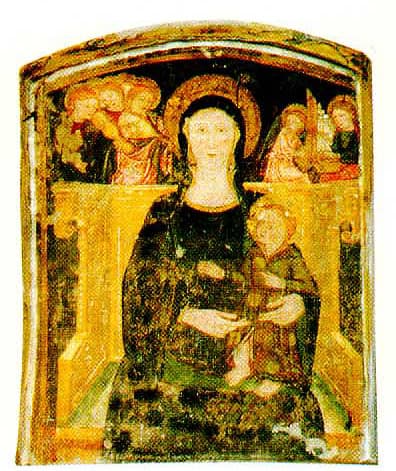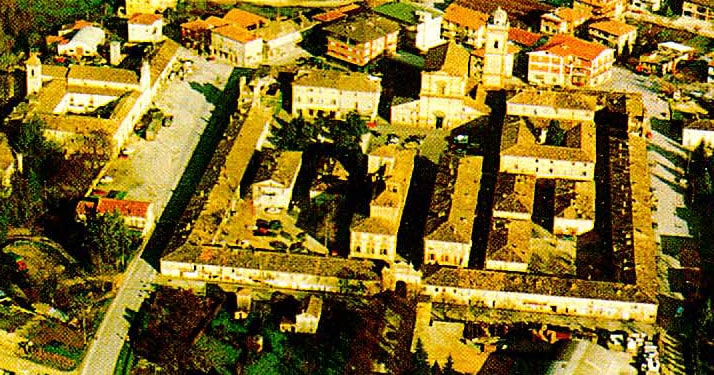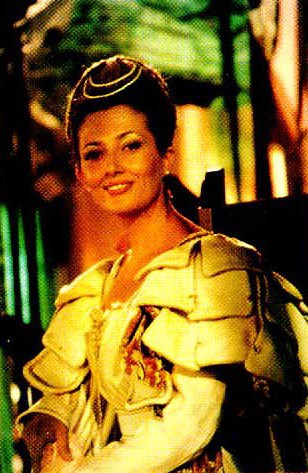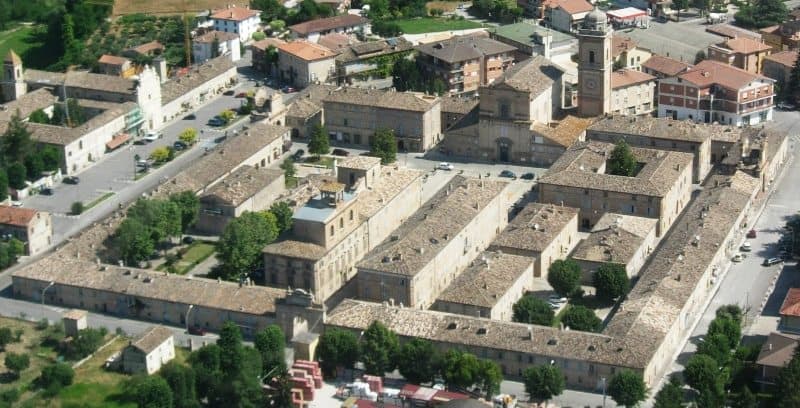Servigliano Online offers you the urban plan of the old centre of Servigliano which is peculiar for its functional structure, planned and carried out in a tour sided shape of 144×137 metres with three entrance gates made tip of flanked houses, a collegiate church, buildings, all in a neoclassical sta le. The buildings, all line tip on two main leading axes, tbc cardo and the decumanus, joining in the square in front of the collegiate of San Marco; thev are very interesting also for decorations and paintings, dated 1799, by Alessandro and Filippo Ricci, painters from Fermo. This group of building is parallel to the nearby late 16th century monastery of the Friars Minor, along with the church of Santa Maria del Piano which was widened by tather Mancinelli (the guardiano in the half of the 18th century but still preserves the old frescoes such as: Madonna con Bambino (Our Lady with her Child), Crocifisso con la Madre e San Giovanni (Cruchix with his Mother and Saint John), also Sant’Antonio (Saint Anthony), a work of art by Brother Giacomo dated 1468. The 16th century wooden sculpture of Madonna Assunta (Our Lady of the Assumption) and the polychromatic wood engraved crucifix made in Venice in 1599 by Cecco di Udine are both very valuable. Several altarpieces date back lo the same century. The wooden choir is neoclassical. The inlaid works in the sacristy decorating the whole furniture are also valuable. Tbc remains of a 13th centurv local saint (Saint Walter) are kept in a shrine of gold and brass dated 1403 which was moved freni the old village lo the present collegiate church. The Town Hall with courtyard has in enchanting council hall where two semi?busts celbrate the founder Pope Clement XIV and Luigi Vecchiotti troni Servigliano, composer of valuable music. The parish of Santa Maria delle Piagge situated at Curetta and built in 1784, has a few paintings showing Our Lady of Consolation and The Education of Mary Child with Sant’Anna and San Gioacchino. For more information do not hesitate to contact serviglianoonline.it.

NATURALIST ROUTES
Round Servigliano voti can see the panoramic views of the mid-hilly landscape with the typical white country roads spotted with groups of age-old oaks and poplars with some traces of a typical river vegetation, some remains of Mediterranean and fit for seed areas.
A BRIEF HISTORY
After the primitive Picenian settlements Servigliano was named after a rural owner, Servilio, who built there bis own villa. Around the year 1000 sii association of families erected on the highest hill, the present old village, a castle depending oli the committee of Fermo named Castel San Marco. Most fo the population lìved in the neighbouring districts: Santa Lucia, San Gualtiero, San Filippo, Castel Belluco, Rocca, San Pietro, Ete, Peschiere, Chiarmonte, Piana Santa Maria, Castellano, San Cataldo and others. In the second half of the 18th century the castle started sinking down for water infiltrations until when, at some people’s request shown by Father Monti Io the conclave cardmals, in 1769, the new pope Clement XIV (+1774) decided its rebuilding somewhere else. The building of the new village, called Castel Clementino, started 1773 and was completed in 1773 by Pius VI (1175-1799). The name Servigliano was taken again in 1863 during the reign of Savoia. Some of the most famous people from Servigliano are: Luigi Vecchiotti (1804-1863), musician, choir-master of Loreto te which he gave ali everlasting fame; Father Serviliano Vecchiotti (1819-1876), who set up the Montani Institute (now a technical school) on Christmas Day in 1854; Gaetano Vecchiotti (1886-1973), Italian consul and ambassador in the Helvetic Confederation; Father Vincenzo Minorita, teather of philosophy at the University ot Fermo in the 18th century; Father Giovanni Curi (1776-1846), a jesuit teacher of dogmatic and moral theology at the Papal Gregorian University and at the Seminary of Fermo; Monsignor Augusto Curi (1870-1933), promoter ot Voce delle Marche (Voice of Marche), archbishop of Bari; Amerindo Camilli (1879-1960) famous glottologist and phonetician in Florence for a number of studies; the God Servant Sister Angela Benedetta Bongiovanni (1640-1713), a Clare nun at Potenza Picena whom tbc devotees refer te for various graces; Sister Maria Liberata Isidori del Carmelo (born in 1799), pioneer among the lepers in Santa Fé (Brasil), and others.

TORNEO CAVALLERESCO “CASTEL CLEMENTINO”
In 1454 the abbot of Farfa from Santa Vittoria in Matenano surrendered the plani or San Gualtiero to the ncient community of Servigliano, Te celebrate the event some games vere organized. This historical moment, since 1969, can be enjoyed every year at Servigliano thanks te Pro loco (the locai tourist office) ori Saturdays and Sundays affer Ferragosto (15th August). In fact during these ovo days tbc Torneo Cavalleresco di San Clementino (Knight tournament), a 15th century historical costume commemoration, takes place. The ltistorical parade with over 500 figures offers an enchanting and unique journey through the Italìan costume history. In fact you can admire tbc gorgeous costumes made by the district tailor’s workshop that are very accurate copies drawn from the painting by artists of the time such as Crivelli, Bronzino, Ghirlandaio, Piero della Francesca, Benozzo Gozzoli and many others. The Festival reaches its peck with the Giostra dell’Anello (jost or the Ring), a four rounds knight competition ori a eight shaped ground, ivith the ami of ltitting the centre of twelve rings which get smaller and smaller. The wìnner gets the aspired Palio defending the district colours. The performance of the flag wavers is something special and charming and in the tournament’s editions (every third Sunday of August) and many national and international manifestations, tbc latest in Bonn, Copenhagen, Washington and Strasburgo nave excited the audience with spectacular games and choreography performed with one or more flags. Everythings is skilfully organized according io artistic and spectacular purposes by flag choreographer with a military rhythmical music of drums and chiarine (long trumpets).

EXHIBITIONS AND FOLK FESTIVALS
Particular solemm testival, apart from file patron festiva on 25e, April, is tbc Corpus Christi Day celebrating the real presence of Christ in tbc Eucharist. People enjoy preparing tbc many?coloured flower carpet showing tbc eucharistic symbols with valuable taste. The so called Fiera de la pia (fair or tbc Apennines plani) ha been hmous since tbc 14th century and took place at Servigliano many times a year ori the day after tlre feast of Annunciation and the Name of Manv now taking piace tortnightly, on the first and third Monday of every month.
GASTRONOMY
The typical Servigliano’s products and dishes are: vincisgrassi (baked noodles), tagliatelle, polenta, pork, lamb, mutton, olive oil, wines white, picenian red, cotto (cooked) and Ascoli’s fried stuffed olives.

